Koalas in Our Midst
Santa Barbara Zoo Hosts Two of the Australian Natives
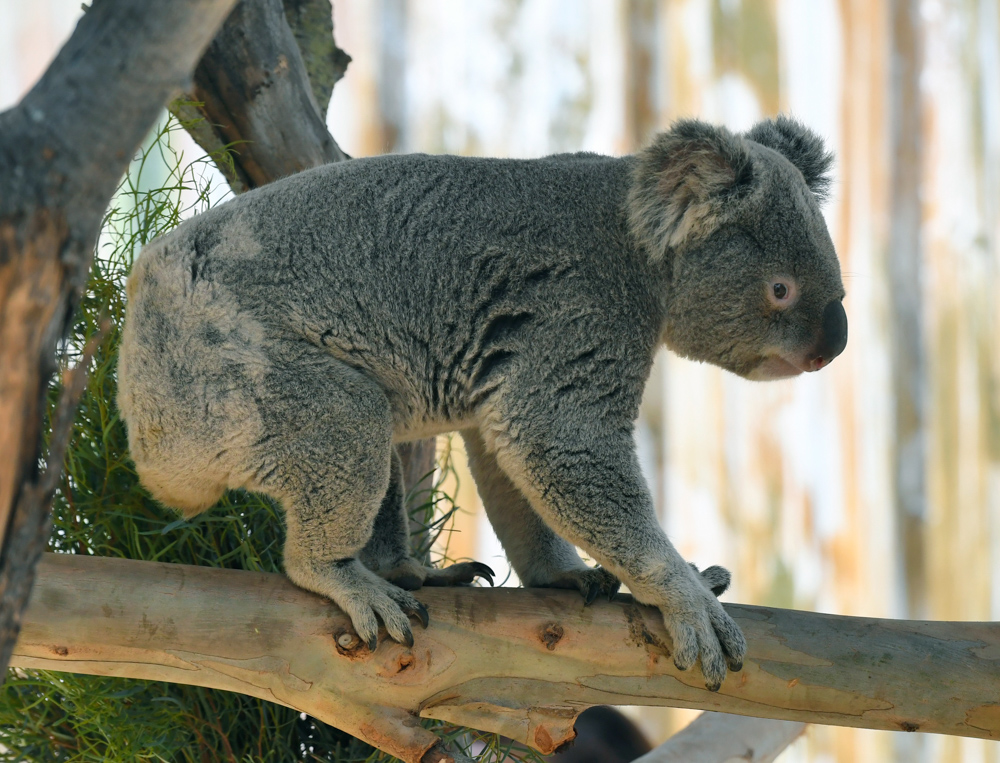
In 1967, Qantas, Australia’s national airline, launched one of the most successful television advertising campaigns in modern history. At the time, few Americans considered Australia as a possible tourist destination. Hoping to remedy that, Qantas hired a San Francisco advertising agency to pitch the joys of Down Under. A cute, live koala hanging from a tree and looking adorable complained, via voiceover, that too many tourists were stomping around his beautiful homeland having too much fun. The highly effective promotion ran for decades and helped turn the koala into the beloved symbol of Australia. Today, one of the leading reasons millions of tourists spend billions of dollars in the country is to see koalas.
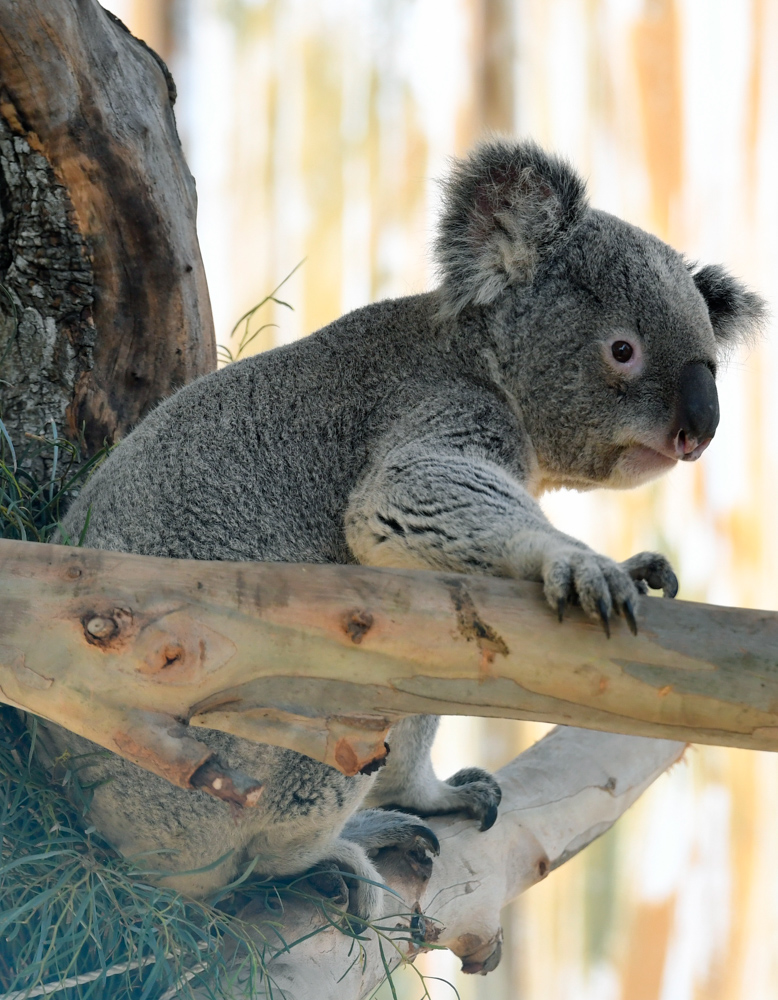
So how has this animal, recognized and beloved around the world, ended up on a global list of threatened, vulnerable species? According to the International Union for Conservation of Nature (IUCN), which rates the health or status of animal and plant species based on data collection and analysis, the koala is “likely to become endangered unless the circumstances that are threatening its survival and reproduction improve.” In other words, if humans ignore the koalas’ continuing population decline, the marsupial will slide into the treacherous territory of Endangered (EN), making them at a “high risk of extinction in the wild.” At that point, it becomes much more difficult to turn the ship around, so to speak. Fortunately, conservationists are on the case, investing resources into educating the public about the koalas’ plight, as well as overseeing breeding programs at zoos around the world to ensure genetic diversity.
The Santa Barbara Zoo, which participates in worldwide conservation efforts, is currently working on the koala mission. Recently, two male koalas — Edmund and Thackory — moved here from their homes at the L.A. and San Diego zoos, respectively. Although they are both part of breeding programs, neither of them is currently needed at the moment based on age and genetics. The two bachelors are currently slated to stay in Santa Barbara until April 2019, as “ambassadors” for their species.
Before Edmund and Thackory could come to Santa Barbara, not only did the zoo have to meet the Association of Zoos & Aquariums’ (AZA) and the San Diego Zoo’s strict requirements for the housing, climate, and care of the koalas, but the Australian government also had to give its approval. “Just as with pandas — China actually owns all of the pandas in the world — koalas are officially owned by the Australian government,” said Julie Barnes, the zoo’s director of animal care and health.
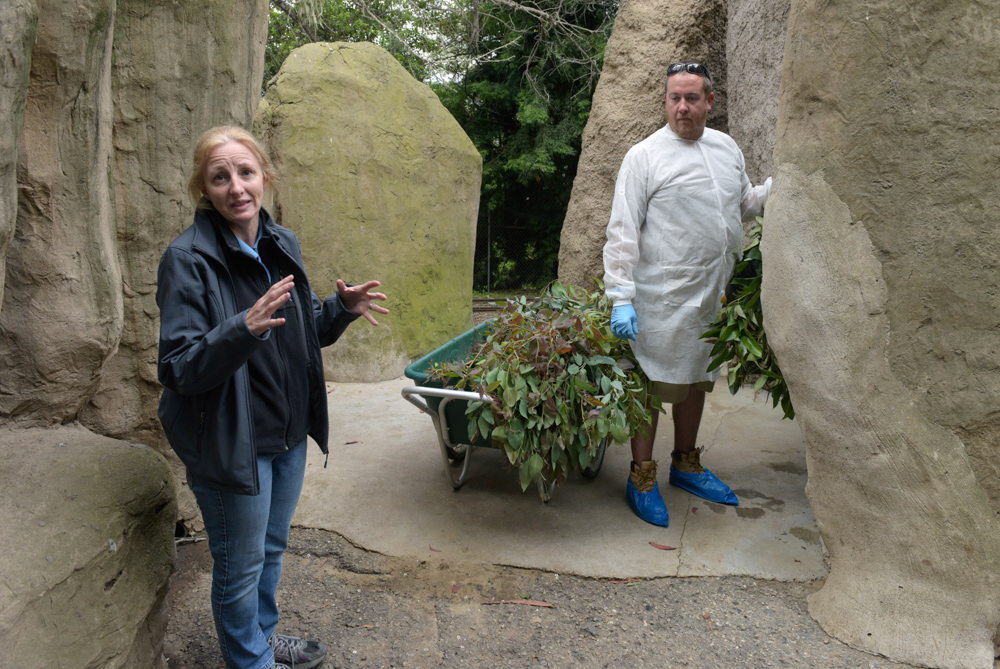
Fortunately, the zoo had many factors in its favor — including a climate similar to eastern Australia — and after a year of wrangling, Edmund and Thackory moved into their new digs this past April. For zoo visitors, this offers a chance to see up close one of the most adorable animals on the planet. But it also affords an opportunity to have a serious conversation about conservation and its importance, according to Barnes.
Despite koalas being the most recognized Australian animal, most foreigners don’t know much about the animal as a species. Perhaps the most misunderstood aspect comes from their name — although they are called koala bears, they are neither bears nor even related to bears. They are tree-dwelling, eucalyptus-leaf-eating, pouched mammals (aka marsupials) and the only living representative of their genus, Phascolarctidae. (Extinct kin include marsupial tapirs and marsupial lions.) Its closest breathing relative is another Australia-only critter, the wombat. (We have only one marsupial in the United States, the Virginia opossum.)
For Australia’s indigenous peoples, the koala has always played an important role in their culture, featuring in Aboriginal Dreamtime stories and myths, as well as in their ancient rock carvings. However, the rest of the world was first introduced to the cuddly looking marsupial when English naturalist George Perry published an illustration of one in his 1810 book, Arcana. Although Perry did mistakenly name the koala the New Holland sloth because it looks somewhat like Central and South American tree sloths, by the turn of the 20th century, the koala was correctly identified and began appearing in children’s books as the fuzzy koala we know today. With the Qantas commercials, the diminutive marsupial achieved global rock-star status.
Who Are Koalas?
“Koalas are not a particularly aggressive species; they don’t tend to run away from you,” said Barnes, a veterinarian who earned her vet degree in Australia and her master’s degree in wildlife health from the London Zoo. Size and appearance depend on the region in which they live: Male koalas in the northern populations average 14.3 pounds, while females weigh between 11 and 13.2 pounds. In the southern territories, males average 26.5 pounds, with females averaging 18.7 pounds. Twice as big as the females, the males emit a low-frequency bellow that can carry throughout the forest. The sound a male koala makes has been compared to a basso profundo pig. Even females make loud, snoring noises since koala “vocal cords” are in the soft palate, not the larynx. Koala joeys, however, just tend to squeak. Their only predators are dingoes and large pythons, though birds of prey can also threaten joeys. In the wild, koalas can live for 12-15 years, with the species ranging over 390,000 square miles of the continent, including on several islands off South Australia’s coast.
Koalas are picky eaters, refusing to consume anything except soft, juicy, new-growth leaves. And even then, they will only potentially eat from about 40-50 varieties of the 700 or so eucalyptus species that exist in Australia. Of the preferred species, about 10 are eaten by most koalas, according to Barnes. However, there are those with such particular palates they may eat only three of the preferred eucalyptus varieties. “Generally in a zoo, we provide three to four different types on a given day once we know our animals’ personal preferences,” she said. Since the leaves have high water content, koalas rarely need to find other sources for hydration. Eucalyptus doesn’t convert into much energy, so not only do koalas have a sedentary lifestyle, but they also sleep up to 20 hours a day. When they are awake, you can bet they are snacking.
Edmund and Thackory
Despite their upper-crust-British-sounding names, Edmund and Thackory both hail from California. Seven-year-old Thackory is from San Diego Zoo, which has the most koalas outside of Australia, and 2½-year-old Edmund is visiting from the Los Angeles Zoo. Although this is Edmund’s first time away from home, Thackory has been an ambassador before. Koala males, which reach sexual maturity at around four years, are highly territorial and will fight with bachelors of breeding age and even youngsters, such as Edmund. They are so territorial, in fact, that Edmund and Thackory have their own separated areas, as they would fight each other if together — even though no females are present.
A day in the life of Edmund and Thackory looks like this: eat, sleep, repeat. The zoo’s mammal keepers do interrupt their routine to conduct health checks. “They get weighed every day, and that’s our best way of assessing how they’re doing,” explained Barnes, who has worked with the marsupials her entire professional career, both in her native Australia and in the U.S. “Body weight’s a really critical factor in determining how they’re settling in … if their body weight stays stable, we know that they’re eating adequately.”
Counting their poop is another way to determine how they are faring. “We collect all the fecal pellets that they produce each day, and it’s weighed and counted,” said Barnes. “If we see the number of fecal pellets go down, or they look very dry, or they’re not weighing as much as they normally would, then that can be our first indication that potentially we’ve got a problem. Either they don’t like the food, or we might have a medical issue starting to brew.”
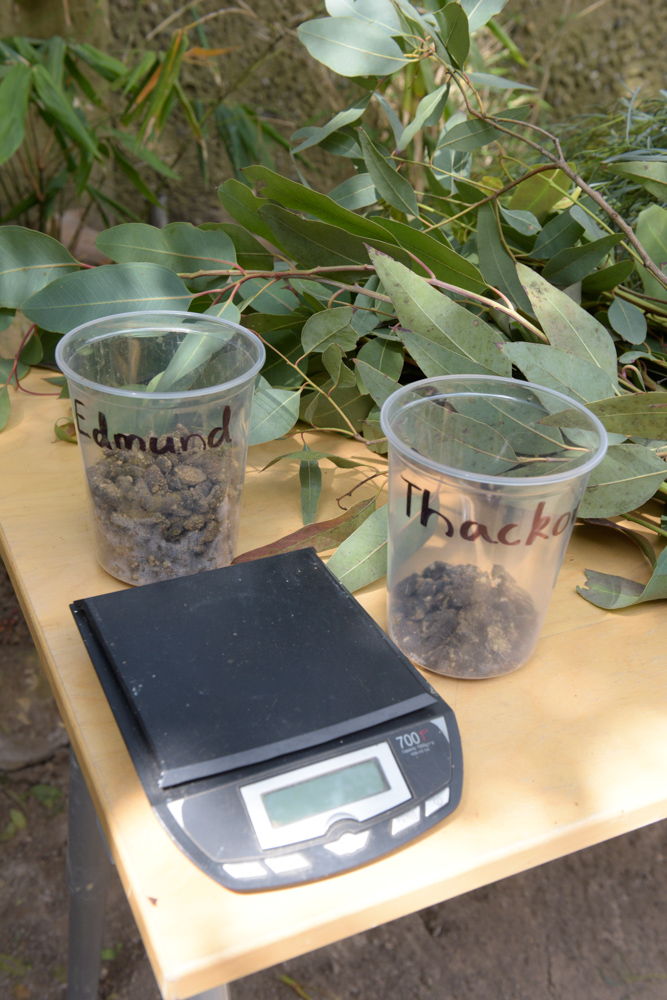
Like most youth, Edmund has a huge appetite. “He just chows down, and he produces a lot of fecal pellets — he averages about 200 [to 300 pellets per day]. It looks like rabbit poop. Thackory doesn’t eat anywhere near as much as Edmund. He averages probably around 150 pellets,” said Barnes. “But it doesn’t really matter …. What we’re looking for is a consistent trend.”
Considering Santa Barbara is lousy with eucalyptus trees, it would seem there would be an endless supply of koala food right at the zoo’s fingertips. But the trees that grow here aren’t managed for harvesting, so the new growth is too high, and you can’t access it. As a result, Edmund and Thackory’s food is flown in twice a week from Australian Outback Plantation, a eucalyptus farm in Arizona. “On plantations, the trees are managed very low … [The leaves are] cut that morning, shipped out that afternoon, picked up that night, put straight in the fridge, and trimmed the next morning just prior to being fed to the koalas,” Barnes said.
Koalas, like humans, have individual preferences. Since Edmund was born, he has been carried facing his keepers; Thackory, on the other hand, likes to be held facing away from his human handlers. “Once they’re adults,” Barnes said, “we generally try to face them outward so you’ve just got more control in case they get a bit upset about something — they can give you nasty scratches and bites.”
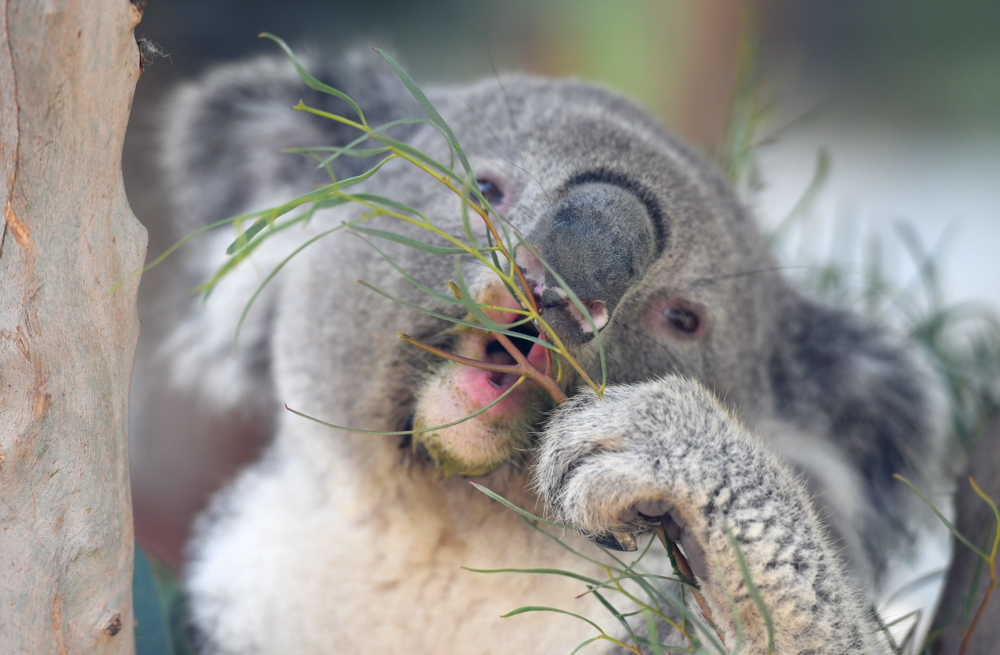
Another differing characteristic between the two is that Edmund is a drooling, messy eater. He squirms when he’s getting his mouth cleaned, but it must be done — not for aesthetic reasons but because when spittle and food build up on their faces and forelimbs, koalas can develop dermatitis, which can become infected and deadly. Although koalas have two fused digits on their back foot — called a grooming claw — with which to clean themselves, Edmund produces such excessive drool that he needs special attention.
Koalas and the Passenger Pigeon
Sometimes popularity can be a double-edged sword — as an animal becomes revered, it also becomes desired. As such, koalas, like the grizzlies of California, were hunted with no restrictions in the early 20th century for their coveted fur. During the 1920s and ’30s, hunting was so extensive that their populations plummeted from several million to a few hundred thousand in some areas.
After public outcry, constraints were introduced, sanctuaries were established, new colonies were set up on offshore islands, and the koala population began to recover. Though their numbers rose, koalas were now scattered in myriad locations with cities and farms separating them, thus making tree travel to establish new territories impossible. As a result, some areas, such as the isolated island communities, have become overpopulated, while mainland groups face forest fragmentation caused by urbanization, mining, and agriculture. “The northern populations, New South Wales and Queensland, have suffered pretty significant decline in the last 20 years,” said Barnes, “and koalas there have now been listed as threatened.” Ideally, each koala would have about a 100-tree territory, which is becoming ever more difficult to achieve as humans remove Australian woodlands. An estimated 4,000 koalas are killed each year by cars and domestic dogs as they move on the ground between the fragmented habitats.
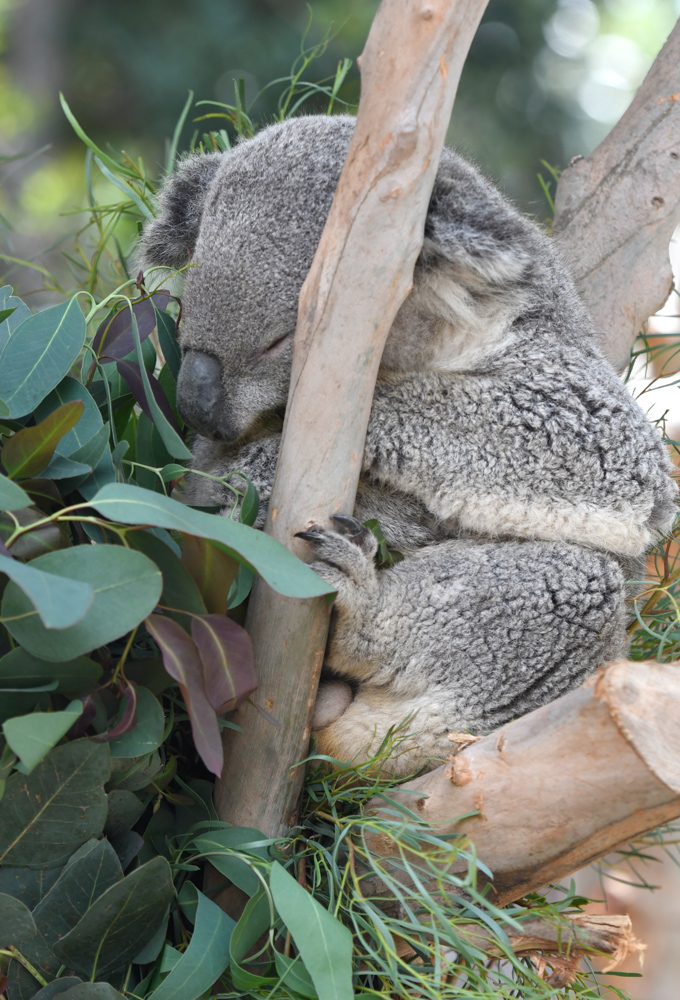
Considering there are places with an overabundance of koalas, why are breeding programs needed? Why can’t you just take koalas from the overpopulated islands and relocate them? “Translocation sounds like it should be easy, but it’s not,” said Barnes. “You have disease concerns; some of those island populations have chlamydia, so you don’t want to put that into another population that is chlamydia-free. There’s retrovirus, which is a new emerging disease in koalas, and they are still trying to understand the impact of that. Also, you can’t just pick up a koala an put it in another area and assume it’s going to eat eucalyptus. It can actually be very stressful for koalas to be moved like that, and they often fail to acclimate when translocated to new areas,” according to Barnes.
While the animal itself is protected, its habitat is not. To amend that, conservation groups in Australia are pushing to have koalas categorized as endangered, because then both the koalas and their habitat would be untouchable. It’s a proactive stance that will help keep koalas around for future generations. But unfortunately, governments often don’t intercede until the situation has become critical, and then it’s incredibly time-consuming and expensive to recover the species. “It’s really difficult to come back from a small number of founder animals,” said Barnes. “A disease could come through, or a natural disaster, and wipe out that whole population.”
It’s happened before. In the mid-1800s, it wasn’t uncommon for the skies over North America’s Great Lakes to darken with the migration of millions of passenger pigeons. But by 1914, the species was extinct, wiped out by hunters and deforestation. After numbering in the billions for some 20,000 years, the bird was gone in the evolutionary blink of an eye. Fortunately, conservationists have learned much from history and are making sure that koalas will live on in perpetuity.



